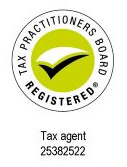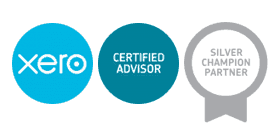Induction, or orientation, is the process of introducing a new worker to the workplace and your business. Its aim is to assist the worker to settle into the job and become fully productive and committed to the business as soon as possible.
A well-structured induction program reassures the worker they have made a good decision in joining the business. There are also legal reasons why induction is essential. These include:
- employment documentation, such as confirming contracts and processing tax declarations
- an obligation to inform workers about their terms and conditions of employment
- work health and safety issues – the employer has a duty of care to ensure the health and safety of workers and other parties such as customers and visitors to the workplace, which means workers must be aware of their obligations and trained to perform their work safely and with diligence
- information regarding evacuation procedures, including risk management.
WHAT DOES AN INDUCTION PROGRAM ENTAIL?
Induction goes beyond simply training the worker on how to do the job. It also includes:
- introducing the worker to the business and the type of work
- outlining their roles and responsibilities
- confirming terms and conditions of employment and completing the initial paperwork
- introducing them to work colleagues
- introducing them to the actual job and specific on-the-job training
- making it as easy and as pleasant as possible for them to settle in quickly
- fostering a positive attitude towards the business, so they not only become productive quickly but also develop loyalty and commitment to your business’ values and behaviours, and code of conduct.
Induction should not just be a brief set of tasks on the first morning. Successful inductions are a process of building productivity, loyalty and commitment.
While there are routine initial steps to complete, other aspects involve an ongoing process over several days, weeks and possibly even months. Therefore, everyone involved in the process needs to be prepared and know their role.
An induction checklist is also helpful to ensure all steps in the process are covered and followed through.
WHAT DO NEW EMPLOYEES WANT DURING AN INDUCTION?
Surveys of employees suggest their immediate priorities are to:
- know they are safe and their work environment is as well
- meet their boss
- meet their co-workers
- acquaint themselves with their job
- receive their first work assignment
- learn the business rules and procedures – both official and unofficial (i.e. unwritten)
Here are some tips for successful inductions:
- Have the worker perform productive work as soon as possible – this will help their confidence and sense of achievement.
- Don’t commit information overload on the first day. Provide only essential information at first, further information can be gradual.
- Pay great attention to creating a favourable first impression. Disorganisation, or managers who don’t have enough time, will create a negative first impression, which can be difficult to turn around.
- Continually reassure the worker, provide feedback and answers to questions, monitor and follow up as required.
INDUCTION CHECKLIST
Repeat the last three steps at regular intervals, for example after one week, one month, and at the end of the probation period. Remember, induction has to be an ongoing process, not a one-day drop-and-run activity.
PRINTED OR ONLINE SUPPORT MATERIAL FOR INDUCTIONS
Even in a small business, it is a good idea to provide back-up information in a printed or online form for future reference. Much of the following should appear in a written contract if not, it should be integrated with the induction package.
Suggested support material includes:
- terms of employment – job title, work section, award or agreement coverage, name of supervisor, a probation period, type of work (full-time, part-time, casual, etc.)
- pay rate, pay method, paydays
- hours of work – start and finish times, meal breaks, overtime or shift provisions
- time-keeping requirements – method, location, lateness, absenteeism
- leave provisions – annual, personal and carer’s, how to apply, medical certificates required
- health and safety – guidelines, procedures, first-aid facilities, incident recording, workers compensation
- handover documents – outlining key roles and responsibilities for the new employee
- facilities – parking, public transport, eating and recreation areas, bathrooms, lockers
- other information – may include dress requirements, uniforms, petty cash, expenses, personal use of various types of employer property, mail, confidentiality, etc.
- performance review – including discipline, the grievance process
- termination of employment – procedure, notice period, dismissal
A good approach is to have a standard format that allows generic information to remain constant, and gaps where specific information for each worker’s details can be added.
If you have employees who do not speak English well, consider having this information translated or use an interpreter.
A good induction will provide ongoing benefits to both employees and the business.









